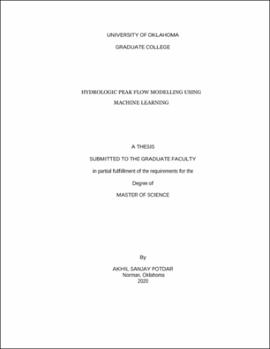| dc.description.abstract | The effect of rainfall spatial variability on catchment responses during floods remains poorly understood. The overall objective of this work is to develop a robust understanding of how rainfall spatial variability influences flood peak discharge, with a focus on its contribution relative to basin physiography. A machine learning approach is used on a high-resolution rainfall and flooding event dataset spanning 10 years and gathering rainfall events and basins of widely varying characteristics across the U.S. This approach overcomes a major limitation of prior studies based on limited observations or model simulations. This study explores the first-order dependencies in the relationships between peak discharge, rainfall variability, and basin physiography, and it disaggregates these complex interactions using a multi-dimensional statistical modeling approach. After selecting amongst the different regression methods (Lasso, Elastic Net, Multi-linear Regression, Random Forest and Xgboost) we use Xgboost to generate regression models to predict peak discharge and perform predictor importance analysis. A parsimonious model is finally created that has low bias and variance and which can be deployed in the future for flash flood forecasting. The results confirm that the spatial organization of rainfall within a basin has a significant influence on the basin response, but the basin physiography is shown to be the primary driver of peak discharge. These findings have unprecedented representativeness in terms of flood characterization. An improved understanding of sub-basin scale rainfall spatial variability will aid in developing a robust flash flood characterization as well as identifying basins which could most benefit from distributed hydrologic modeling. | en_US |
